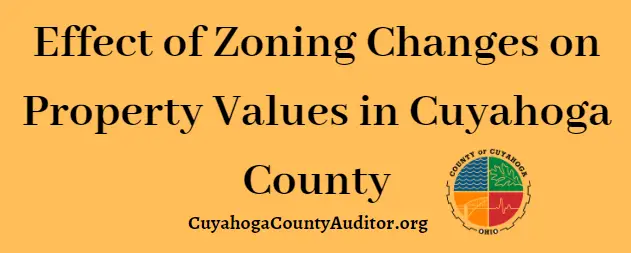Zoning changes are crucial elements in urban planning, determining the permitted uses of land and the structures that can be built on it. In Cuyahoga County, Ohio, these changes can significantly impact property values, shaping the landscape of neighborhoods and communities.
Importance of Zoning Laws
Zoning laws are enacted to promote orderly development, protect property values, and maintain the character of different areas within a county. They establish guidelines for land use, such as residential, commercial, industrial, or mixed-use zones.
Types of Zoning Changes
Rezoning
Rezoning involves changing the designated use of a property. For example, an area previously zoned for residential use might be rezoned for commercial purposes. This can have both positive and negative effects on property values.
Overlay Zoning
Overlay zoning adds additional regulations to an existing zoning district. It might impose design standards or restrictions to preserve historical or environmental features. While this can enhance property values in some cases, it may also limit development options.
Conditional Use Permit
A conditional use permit allows for specific uses of a property that are not automatically permitted by the existing zoning. This could include things like home businesses or bed-and-breakfast establishments. While it can provide flexibility, it also introduces uncertainty about future developments in the area.
Impact of Zoning Changes on Property Values
Zoning changes can have a profound impact on property values, influencing market demand and desirability.
Positive Impacts
Increased Property Value
In some cases, zoning changes can lead to increased property values. For instance, rezoning an area for mixed-use development might attract businesses, restaurants, and entertainment venues, making the neighborhood more desirable.
Enhanced Neighborhood Aesthetics
Overlay zoning that mandates architectural standards or green space requirements can enhance the aesthetics of a neighborhood, making it more appealing to potential buyers.
Negative Impacts
Decreased Property Value
On the flip side, certain zoning changes can decrease property values. For example, rezoning a residential area for industrial use might deter homebuyers due to noise or pollution concerns.
Restrictions on Property Use
Zoning changes that restrict property use, such as limiting the height of buildings or prohibiting certain types of businesses, can also lower property values.
Case Studies in Cuyahoga County
Cuyahoga County has seen various zoning changes over the years, each with its own effects on property values. For instance, the rezoning of downtown areas for mixed-use development has revitalized neighborhoods and increased property values.
Strategies for Property Owners
Property owners can take proactive steps to navigate zoning changes. This might include attending community meetings, staying informed about proposed changes, and advocating for their interests.
Role of Community Engagement
Community engagement is crucial in the zoning process. When residents participate in discussions and provide feedback, it can lead to zoning decisions that benefit the community as a whole.
Future Trends in Zoning and Property Values
As Cuyahoga County continues to evolve, trends in zoning are likely to focus on sustainability, mixed-use developments, and preserving historic areas. Property values will reflect these changes, with demand shifting towards more walkable, vibrant neighborhoods.
Conclusion
In conclusion, zoning changes play a pivotal role in shaping property values in Cuyahoga County. While they can have both positive and negative impacts, understanding these changes allows property owners to make informed decisions and adapt to evolving market conditions.
